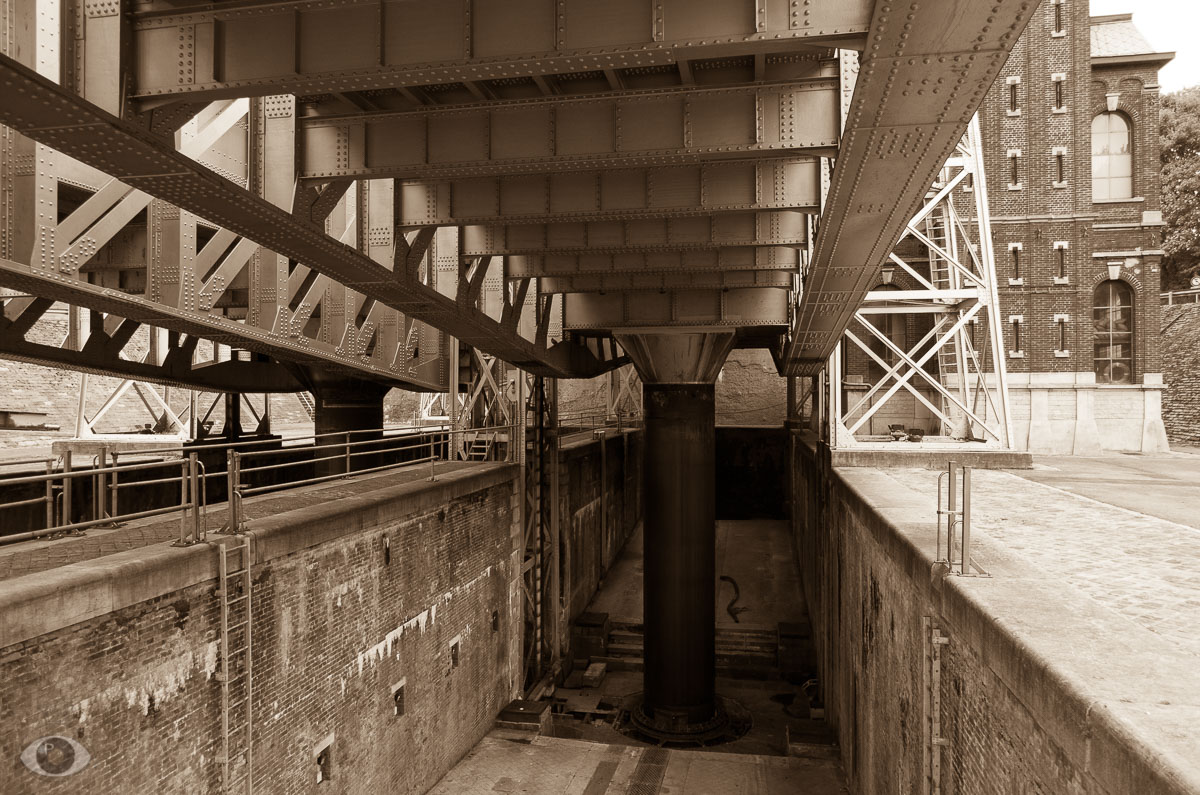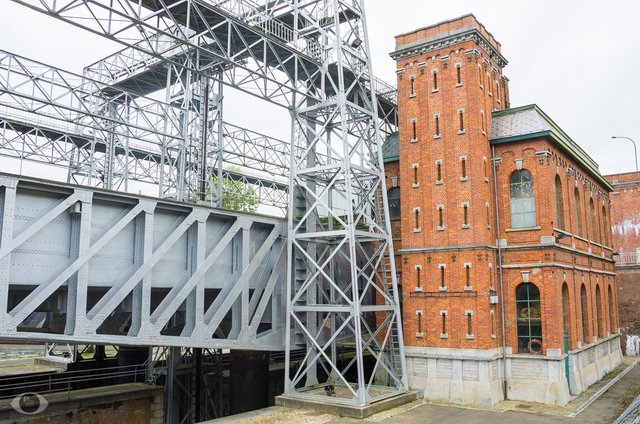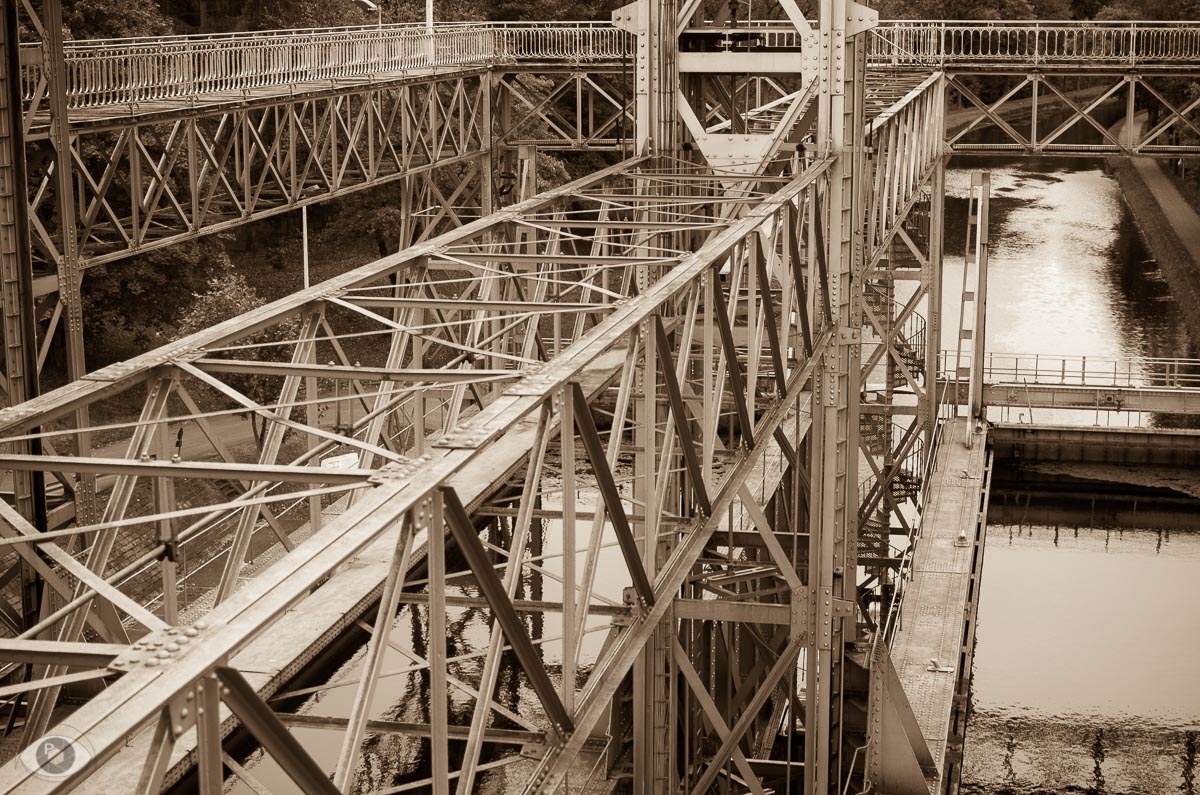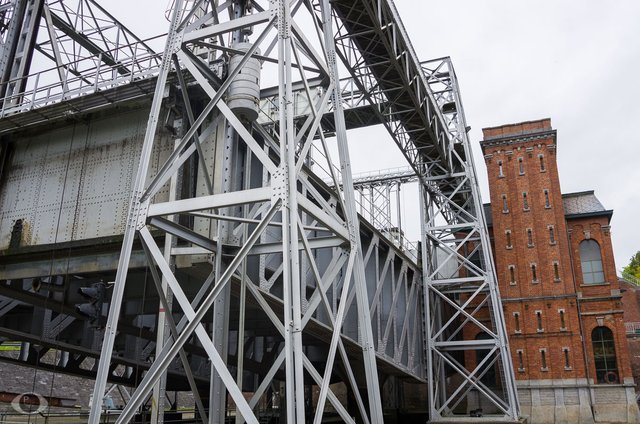So how does a lift lock work?
As a follow up on my post on Houdeng-Goegnies I thought it might be interesting to explain how a lift lock (or boat lift) exactly works. We were lucky to have the locks parked in the middle, so I can explain more or less easily in one image:

What you see here is the bottom part of one caisson (think of it as a large bassin.) One caisson measures roughly 40 x 5 x 3 meters (131 x 16.5 x 10 feet) - there are 2 of them. It is mounted directly on the iron column you see in the middle of the photo and supported with 9 pillars, 6 for each caisson (the middle 3 are shared between the two) - you can see a fragment of one such a pillar at the back at the right.
The columns (hence the caissons) are hydraulically linked in such a way that one caisson rises as the other descends. The two caissons counter balance each other even when no boats are in one caisson and the other is at maximum capacity (which is 350 tons - be it one boat or several.) The law of Archimedes dictates that a floating object (a boat in this case) displaces as much water as the weight of the object - hence the total weight of the caisson (3500 tons) theoretically never changes. In practice it varies between 3000 and 4000 tons because the water levels between the caissons are never exactly the same.
Here is where it becomes interesting. The pumping machine should be strong enough to pump in a given time 1000 tons of water. Remember that lift n° 1 was built in 1888, a time where electrical power was rare. It must have been a hell of a task to fire up the steam engines that drove the caissons! These engines were in the brick building at the back (they are long replaced by electrical pumps.)
In Houdeng-Goegnies, the caissons travel vertically over a distance of 15.4 meters (50.5 feet) which is 1.5 meter less than on the three other lift locks. These four lift locks lay on the centre canal, a stretch between the rivers Meuse and Scheldt, greatly reducing the distances that ships sometimes had to cover. However, given the level differences between the two rivers, all water flowing between them had to be pumped back otherwise one river would drain into the other. A lift lock greatly reduces the water that has to get pumped back, and that is why it was opted to build lift locks instead of normal canal locks...
Some additional photo's of Lift N°1:



Unless otherwise noted, all photo's are made by myself!
If you liked this post and the photo's, then you might also probably like other posts I made like this one here and anothere one here.
Thank you for watching and if you liked it vote/resteem/reply!
Interesting, thanks for sharing this informations. Nice pictures as well.
Thank you, Walter!
My pleasure!
Thanks anonymous. Ik dacht effe dat er "een haar in de boter" was...
This post received a 4.66% upvote from @randowhale thanks to @pentaxke! To learn more, check out @randowhale 101 - Everything You Need to Know!